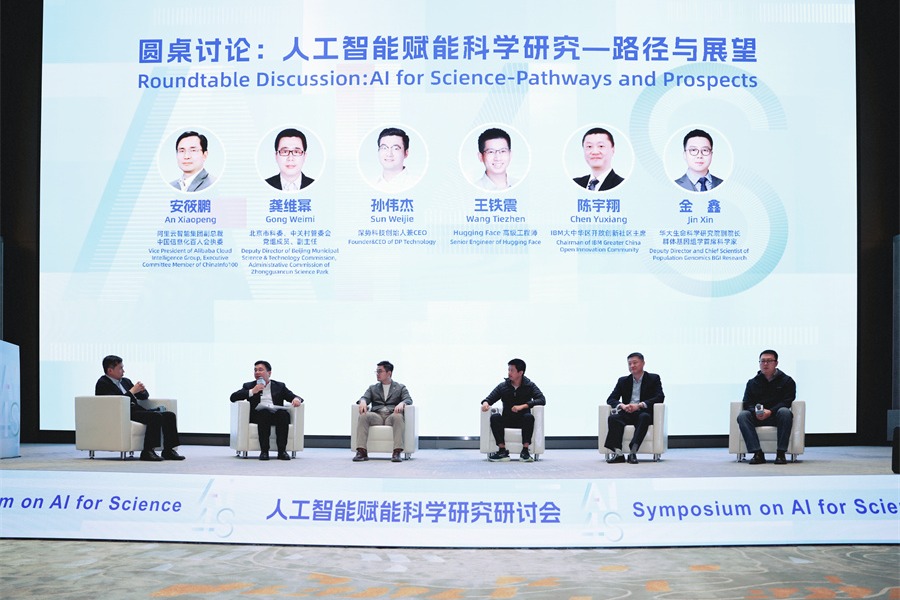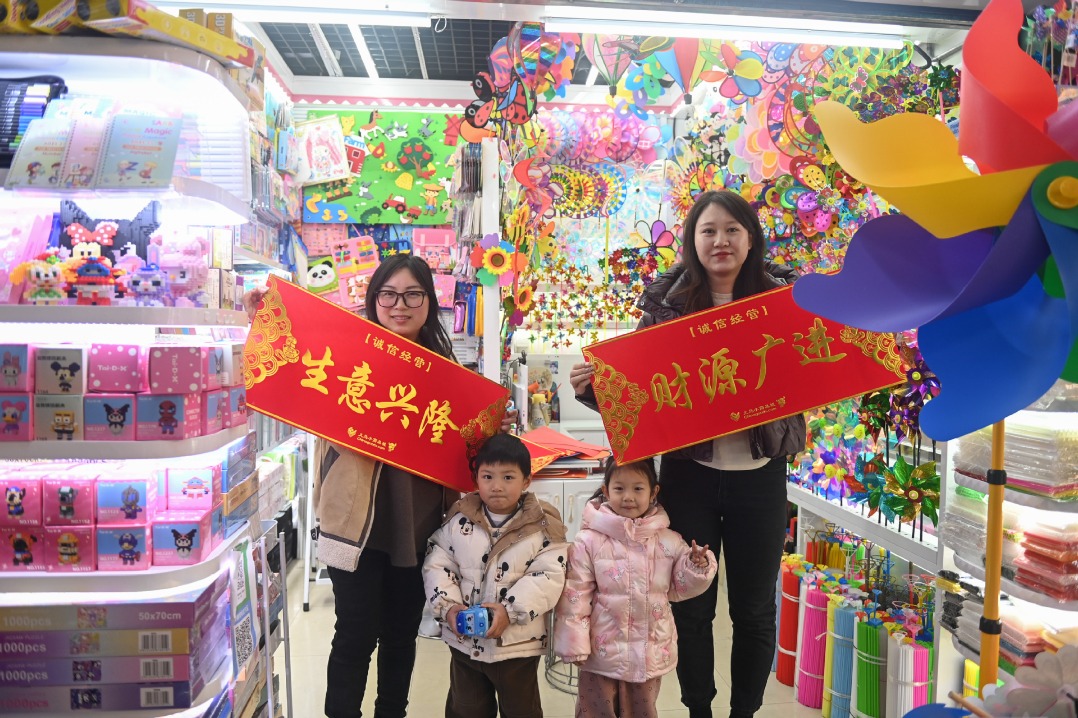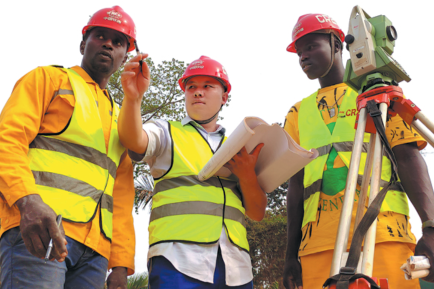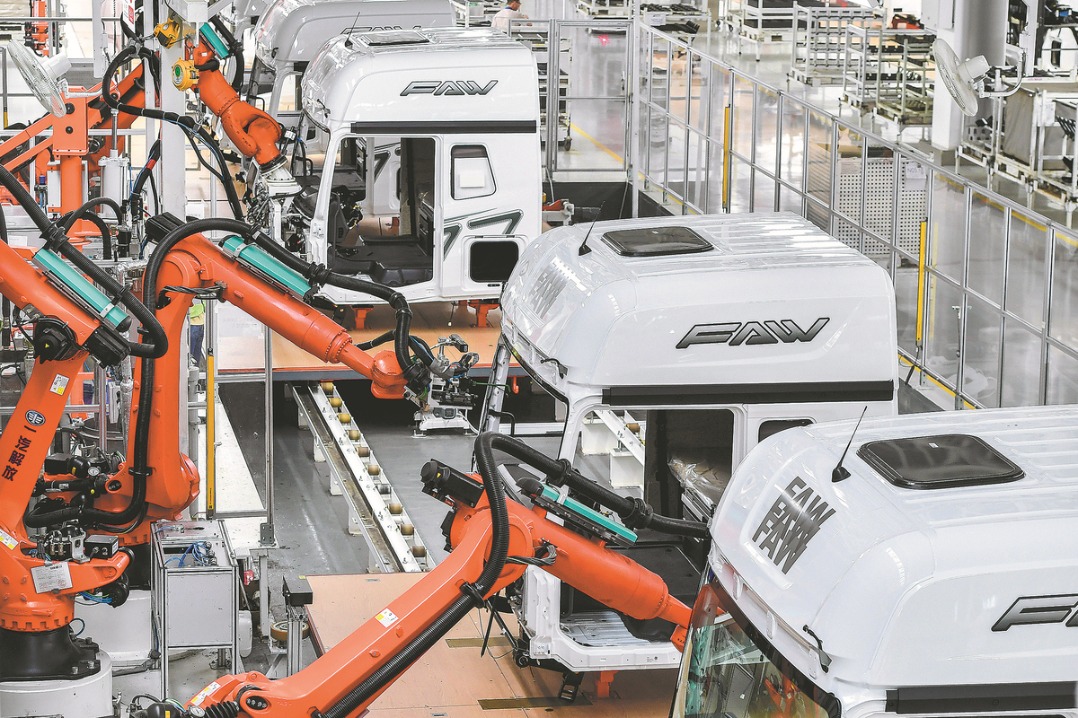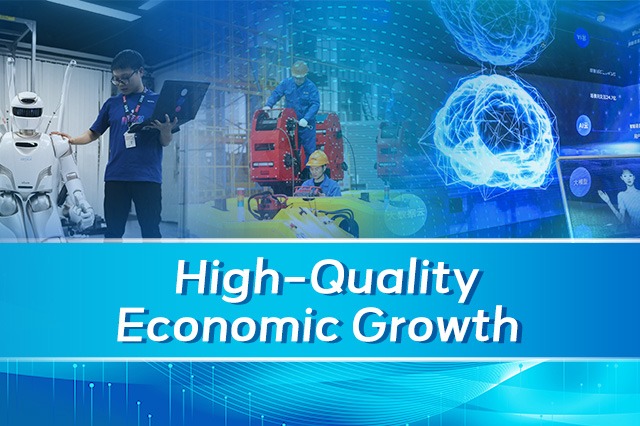Green development drives Chinese enterprises' global expansion


Addressing climate change and exploring green, low-carbon and sustainable development represent critical challenges facing humanity. Progress toward achieving the United Nations' 2030 Sustainable Development Goals remains limited, with significant gaps still needing to be bridged. All countries are in urgent need of green and low-carbon transitions, requiring increased investment and more effective international cooperation. China has adopted "green development" as the country's major development strategy.
President Xi Jinping has emphasized that: "To protect the environment is to protect productivity, and to improve the environment is to boost productivity."
A green and low-carbon economy and society are crucial to advance high-quality development and Chinese modernization. With its vast economic capacity, China's pursuit of green development is expected to lead to deeper cooperation in trade and investment with other countries in relevant fields, thereby enhancing prospects for global economic recovery.
Global expansion key
Expanding overseas markets is an essential step for companies pursuing globalization. Amid profound shifts in global politics and economies — including technological revolutions, geopolitical conflicts and restructuring of global value chains — Chinese enterprises face increasing uncertainties in overseas markets. However, these changes also present new opportunities.
Many countries have pledged to achieve net-zero emissions by mid-century and are accelerating investments in renewable energy, reflecting strong market demand. According to the United Nations' Sustainable Development Goals Report 2024, global renewable energy capacity grew at an unprecedented annual rate of 8.1 percent between 2017 and 2022, with remarkable progress in renewable energy.
Chinese enterprises are expected to sustain steady growth of the global economy. China holds a competitive edge in renewable energy supply chains, with significant market shares in photovoltaics, wind energy products, batteries and electric vehicles. Combined with technical and operational expertise, China is well-positioned to drive rapid internationalization in renewable energy.
Through green development initiatives and the advancement of its dual carbon goals, China continues to enhance international cooperation, jointly launched the Initiative for Belt and Road Partnership on Green Development with 31 partner countries and has established the Belt and Road Initiative International Green Development Coalition with more than 170 international partners from over 40 countries.
Clean energy pillar sector
Clean energy is emerging as a focal point of international economic cooperation. China's exports of green products are growing rapidly. In 2024, China's production and sales of new energy vehicles accounted for over 70 percent of the global total, marking 10 consecutive years of global leadership. NEV exports surpassed 2 million units for the first time, while exports of lithium-ion batteries reached 3.91 billion units, both hitting record highs.
China's photovoltaic products have exceeded 200 billion yuan in exports for four consecutive years, and exports of PV modules reaching 820 million units, up 80 percent year-on-year. The growth of green industries has also spurred new overseas business models. Chinese companies are increasingly leveraging local resources, investing in NEVs, solar panels and energy storage equipment such as automotive batteries.
These efforts aim to build and extend local green industrial supply chains to achieve sustainable development. For instance, in Africa, Dongfeng Motor signed an NEV project framework agreement with Egypt's Ministry of Public Enterprise to localize NEV production. Meanwhile, several Chinese battery companies announced investments in Morocco to establish battery manufacturing plants, contributing to the development of Morocco's first industrial park dedicated to EV battery production.
These companies not only bring advanced battery manufacturing technologies and equipment, but also contribute to building comprehensive automotive battery supply chains in the region. China collaborates globally to improve clean energy supply chains, share knowledge and jointly promote green, low-carbon energy transitions.
Sustainability critical
Chinese companies actively fulfill social responsibility and put environmental, social and governance principles at the core of their strategy and operations, fostering local economic and social development while improving community welfare. Currently, China collaborates on green energy projects with over 100 countries and regions, with 34 countries participating in the Belt and Road Energy Partnership.
In Africa, China has not only fulfilled its commitment of "stop building new coal-fired power projects abroad", but also implemented hundreds of green energy and grid projects. These efforts will significantly enhance the generation capacity for solar and wind power, improve Africa's energy supply structure and reduce electricity costs.
In Gulf Cooperation Council countries, China's clean energy partnerships have achieved notable results. Projects such as Saudi Arabia's Al Shuaibah Solar PV project and the UAE's Al Dhafra Solar PV project — the world's largest single-site solar power station — are increasing the share of renewable energy in GCC energy portfolios, accelerating carbon reduction goals and promoting economic diversification.
High-quality BRI growth
The fourth symposium on the Belt and Road Initiative highlighted that the BRI has entered a new phase of high-quality development. Principles of extensive consultation, joint contribution, shared benefits, openness and sustainability are guiding the expanding cooperation in emerging sectors. In green collaboration projects, China aims for high quality standards, ensuring project competitiveness and balancing major landmark projects with community-based initiatives. Green development will continue to drive China's high-quality opening-up, injecting new momentum into global economic stability and growth.
The writer is an assistant research fellow of the Institute of West-Asian and African Studies at the Chinese Academy of Social Sciences.
The views do not necessarily reflect those of China Daily.



















